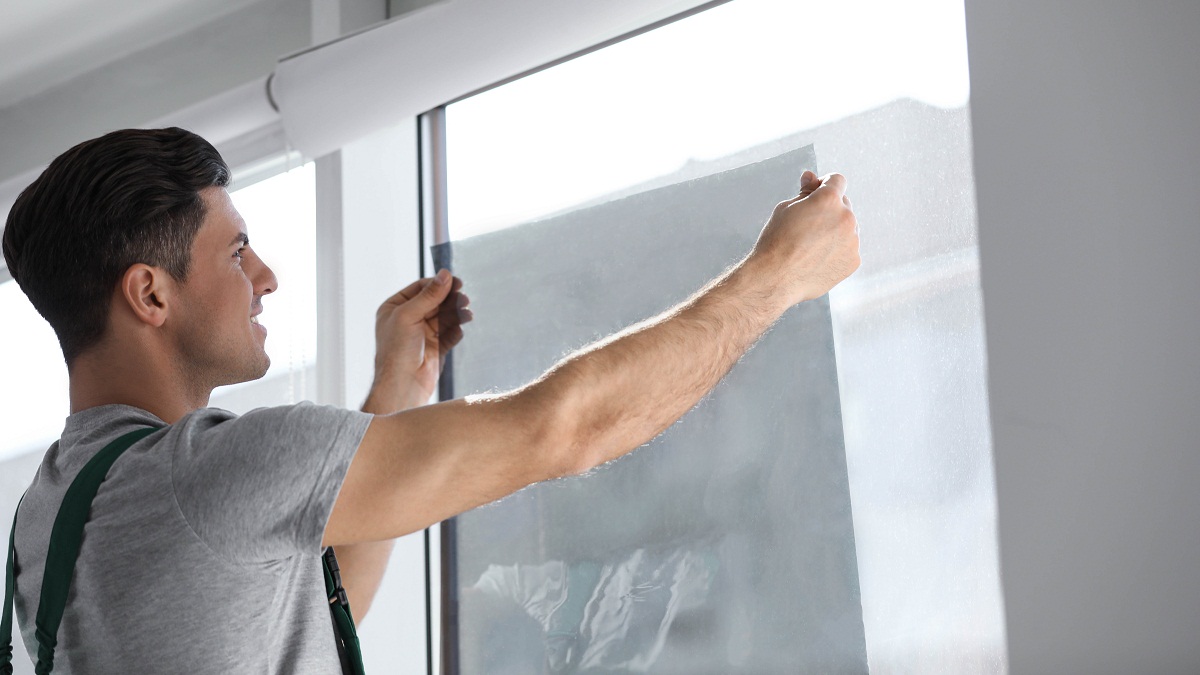Heat-retaining window film is a very cost-effective way to stop heat escaping from your home and cut down on energy bills. That said, it does come with a price tag – and there’s a reason for that. Everyone in Britain of a certain age will remember when Blue Peter presenters used a lot of sticky-backed plastic in their projects, and at a casual glance window film looks similar to that. So why does it cost more? Well, that’s because it isn’t just a sheet of sticky-backed plastic, there are different layers inside of window film. Our window films are actually very sophisticated materials. Here’s what’s in them.
● Scratch-Resistant Surface. Window film needs to be able to withstand cleaning without becoming scratched. To protect it, the film has an outer layer of hard plastic. As long as you follow the cleaning instructions this will preserve the appearance and energy-saving properties of the layers underneath. There’s no way to make a flexible film – or even a hard coating – as tough as glass, but our films are very robust and will last for years thanks to their protective outer layer.
● Polyester Layer. Under the toughened surface there’s a layer of transparent polyester sheet. This gives additional protection, and if you’ve opted for a tinted film it’s this layer that the tint is applied to. Polyester is easily dyed, so films can be produced in a range of colours and degrees of transparency – from so close to completely transparent that you’ll barely notice it’s there, to very dark films that give excellent privacy. This layer is manufactured to a very precise, even thickness to prevent optical distortion.
● Bonding Layer. A flexible adhesive layer attaches the polyester to what’s underneath.
● IR-reflective Layer. The next layer is the one that does the actual energy saving. It’s another layer of polyester, but this one has a film of tiny metal particles applied to its surface. The process is similar to how mirrors are made, but the metal layer is much thinner – it’s so thin, and the particles are so small, that it’s almost invisible. However, infrared radiation has a longer wavelength than visible light. Thanks to some clever physics, that means this layer is transparent to light but acts as an infrared mirror, so heat is reflected back into your home instead of escaping through the glass. Again, this layer is optically neutral and won’t cause distortion.
● Pressure Sensitive Adhesive. The IR-reflective layer is backed up with a very strong pressure-sensitive adhesive. Applied to clean glass this forms an extremely durable bond that fully cures within 15 days. It can be removed, but it isn’t going to peel off on its own.
● Backing Sheet. Finally there’s something that resembles sticky-backed plastic! A peel-off backing protects the PS adhesive until it’s time to apply the film.
Although it’s a complex lamination of several layers, window film is still very thin and unobtrusive. It looks simple, but it’s manufactured with very high precision and strict quality control. That’s why it costs more than the stuff Blue Peter used to slap on things – but it makes up for that by cutting your heating bill. And now you know how that works!

